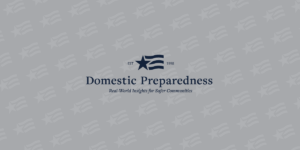

Medical Surge Management: Public-Private Healthcare Coalitions
Chad Priest and Bobby Courtney
May 25, 2011
Thanks (sort of) to the ravages caused by Hurricane Katrina, and a number of other disasters – including terrorist attacks – there is a growing awareness that U.S. healthcare facilities must focus much greater attention on building, and/or improving, their individual and collective “surge” capabilities. Here is a brief report on what has been accomplished so far, and some helpful recommendations to both improve and accelerate the process.

Mass Evacuation of Medical and Functional Needs Populations
Bruce Clements
May 25, 2011
It is reasonable to expect that, when the population of a community – or nation – grows, the need for a mass evacuation of some type will grow at the same pace. That need increases exponentially, though: (a) when catastrophic weather events occur with greater frequency; and/or (b) in the current “Age of Terrorism” when mass-casualty incidents have become the normal way of waging war. In either case, the protection of special-needs populations becomes immensely more difficult.

The Handling of Mass Fatalities During Medical Surges
Anthony S. Mangeri
May 25, 2011
The earthquakes, tornadoes, and terrorist attacks of the past several years have led to increased global awareness of the need to create, improve, and expand mass-casualty response capabilities. The most immediate emphasis, understandably, is on the saving of lives. But there also must be much greater attention, it says here, to the safe, proper, and respectful disposal of the bodies of the recently deceased.

Training Programs for Infrastructure Partners
Domestic Preparedness
May 24, 2011
The Department of Homeland Security’s Office of Infrastructure Protection offers a wide array of training programs and resources, free of charge, to government and private sector partners.

The Expanding Role of Sanitarians in Public Health Emergencies
Rahul Gupta
May 18, 2011
Doctors, nurses, and other highly visible professionals get the greatest credit, deservedly, in most public-health incidents and events. Playing increasingly important roles, though – before, during, and after such incidents – are the nation’s unsung and much less publicized sanitarians whose special expertise in numerous operational scenarios is finally being recognized.

Hospitals & Fire Departments: Three-Alarm Fires, MSH & Best-Practice Results
Theodore Tully
May 18, 2011
A major fire in one of the nation’s finest hospitals led quickly to: (a) the massive evacuation of almost 450 patients; and (b) numerous follow-up meetings to find out what had gone wrong and how to handle such incidents more quickly, and more effectively, in the future. The end result was a White Paper summary of special interest to all of the nation’s hospitals and fire departments.

TRANSCAER Launches Online Safety Training
Domestic Preparedness
May 17, 2011
TRANSCAER® (Transportation Community Awareness and Emergency Response) has launched its first-ever Anhydrous Ammonia Training online training program to educate and train officials across the country on emergency responses to anhydrous ammonia incidents.

Staffing, Stockpiling & Surging Forward
Joseph Cahill
May 11, 2011
As most people know, it is impossible to be totally prepared, at all times, to cope with any and all disasters of any type and of any magnitude imaginable. But there are many common-sense steps that can be taken to lessen the impact of most if not all of the most likely disasters. Here is a brief check list of some of the more effective ways, reasonable in cost, that major cities and small towns alike should consider to cope with potential mass-casualty incidents.

Critical Issues Faced by MRC in a Special Needs Shelter
Amy Schmitt, Donald Brannen and Mark McDonnell
May 11, 2011
The chill wind that started on 31 January immobilized a major area of the country and brought ice, snow, sleet, and misery to 100 million Americans. Among the hardest hit were numerous special-needs patients, already incapacitated, waiting for help that came far too late or, in some cases, not at all.

Whole-Body Imaging: A Safe Alternative to the ‘Pat Down’
Aaron Sean Poynton
May 4, 2011
Several myths to the contrary notwithstanding, the new WBI passenger screening booths installed at U.S. airports to improve in-flight security are not only extremely safe but also both visually and morally unobjectionable. For those not convinced, there are other options, including a quick and unobtrusive pat down – in a private screening room, if requested. The overarching goal, of course, is to ensure that the friendly skies of U.S. airspace are as safe as is humanly possible.

